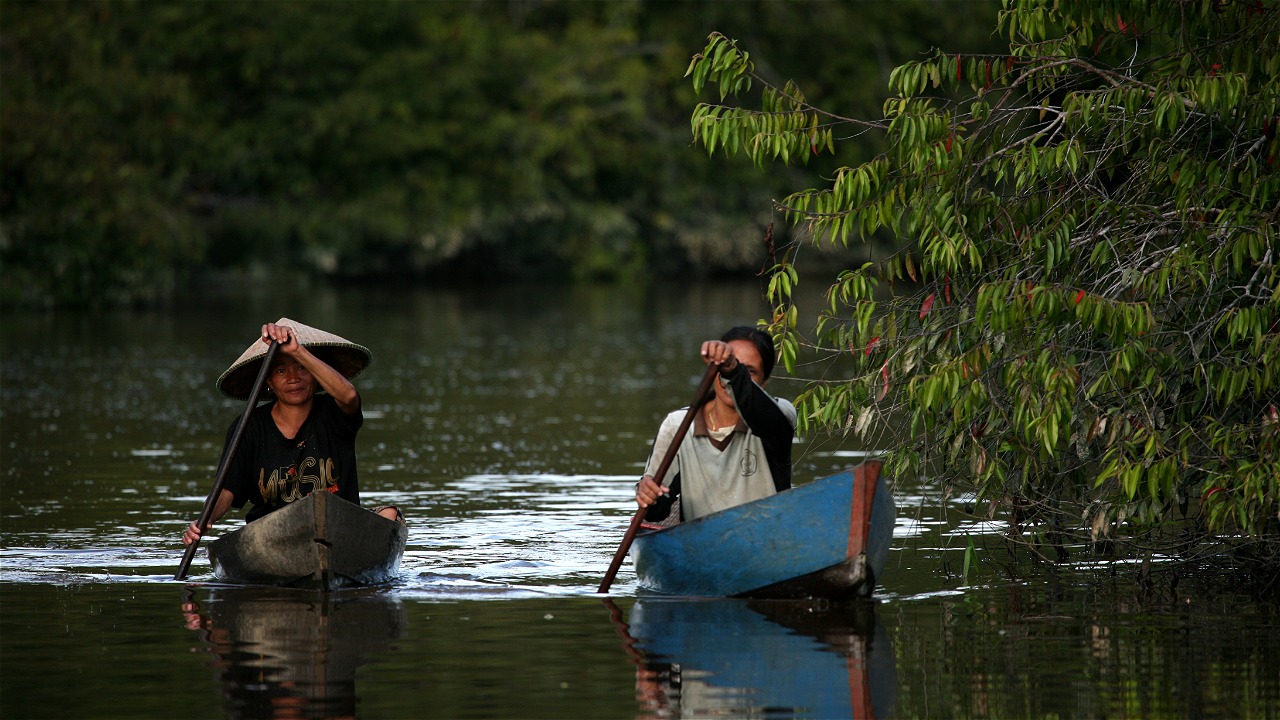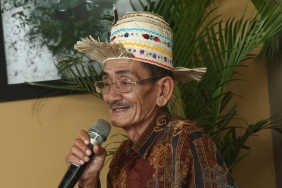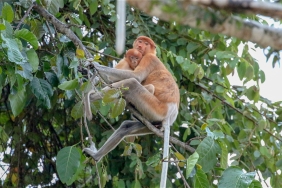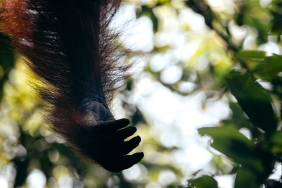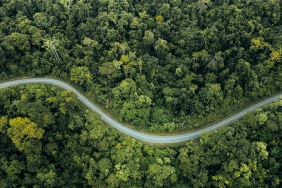EXPLORING THE INLAND WATERS OF RIMBANG BALING AND LAKE SENTARUM
By: Dita Larasati (Capture Fisheries Assistant)
Cool weather and the beauty of the hill line accompanied our journey across the river to the research station which was also designated as a halfway house in Bukit Rimbang Baling. Our arrival, the WWF-Indonesia team together with the Sub-directorate of Inland Public Waters-Ministry of Marine Affairs and Fisheries (Sub-directorate PUD - KKP), Bogor Agricultural University (IPB), and the Palembang Public Waters Fisheries Research Center (BPP3U) on November 17-20, 2016, aims to see whether draft indicators of Ecosystem Approach to Fisheries Management (EAFM) inland waters that have been compiled are relevant to be applied in the field. The sites selected for this pilot assessment were Rimbang Baling, Riau and Danau Sentarum, West Kalimantan. For the Rimbang Baling site, we assessed the waters of three villages in Sungai Subayang, Kampar Kiri Hulu District, Kampar Regency, Riau Province, namely Muaro Bio Village, Tanjung Belit Village, and Gemma Village. Before conducting the assessment we had obtained information about field conditions, target locations and stakeholders from discussions at Riau University with local stakeholders. For us, this activity was unique because we usually conduct research in marine areas. With the help of the experts involved we tried to conduct research in inland water areas, namely river, lake and swamp waters. The EAFM PUD assessment indicators consist of Fish Resources, Habitat and Ecosystems, Fishing Techniques, Social, Economic and Institutional.
We made our first visit to Muara Bio Village using boat transportation. The splash of river water that soaked our bodies became a special excitement for us. Along the way we passed several villagers. Villagers also use boats as their means of transportation for daily activities, namely, catching fish, carrying household materials and others. There is a rope across the river to mark the boundary of the lubuk larangan. According to Mr. Mawarji, Head of Muara Bio Village, each village along the Subayang River has two prohibition holes or boundaries so that residents do not fish until July or until an agreed time from the results of village deliberations and ninik mamak, namely elders, respected customary leaders. Actually, this tradition provides benefits for villagers because it can ensure the preservation of fish resources. Unfortunately, there are no written rules regarding the size of fish catches and restrictions on the types of fishing gear allowed when opening this prohibited hole.
The next day, we continued our journey to Tanjung Belit Village to discuss with the fishermen. Most of the residents of Bukit Rimbang Baling make a living as rubber farmers and occasional fishermen. Usually, fishermen use fishing rods and nets to catch fish. Fish species that are commonly caught include kapiek (Puntius schwanepeldi), belida (Chitala lopis), baung (Mystus nemurus) and tapah (Wallago leeri). The variety of fish species in this area is influenced by the absence of industrial-scale entrepreneurs in the location.
"In the river basin in Muara Bio village, there are still tapah fish as big as humans," said a fisherman in Tanjung Belit village during an interview.
On the third day we visited Gemma Village. When compared to other villages, Gemma Village can be said to be the most complete village for finding household needs, there are also schools and markets. On average, fishermen from other villages sell their catches to fish collectors in Gemma Village.
The results of this first pilot testing show the need for adjustments to the saving ratio indicator (economic domain). This is because fishermen do not make fishery activities their main livelihood. But in general, the EAFM PUD assessment indicators can be applied to river waters.
After the activities in Rimbang Baling were completed, the series of activities continued with consultant training for EAFM PUD assessment in Danau Sentarum on December 16, 2016 in Pontianak. The training material was delivered by a team of experts from IPB, namely Mr. Mukhlis Kamal and Taryono Kodiran to Pontianak State Polytechnic lecturer, Mr. Jumaidi. Later Mr. Jumaidi will carry out the assessment with his team at Lake Sentarum. The results of the PUD EAFM assessment trial in Danau Sentarum will be used by the team to refine the draft PUD EAFM indicators. After a series of activities are completed by the Pontianak State Polytechnic team at the end of January, the activities will continue with a discussion workshop at the national level to finalize the EAFM PUD assessment matrix. In addition, training and education for fishermen and stakeholders are also planned to ensure this fisheries management can be understood and implemented optimally.

